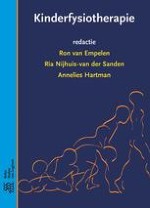Gepubliceerd in:
2016 | OriginalPaper | Hoofdstuk
3 Groei en ontwikkeling
D Fysieke fitheid en training
Samenvatting
Zoals in voorgaande delen van dit hoofdstuk beschreven, zijn de toename in lichaamslengte en -gewicht de meest opvallende fysieke ontwikkelingen in de kindertijd. Naast anatomische veranderingen vinden er in het lichaam van een kind tijdens de groeifase ook grote (inspannings)fysiologische aanpassingen plaats, bijvoorbeeld in de functie van het metabolisme. Hiermee moet rekening gehouden worden wanneer men interventies wil plegen op het gebied van de gezondheidsgerelateerde fysieke fitheid en training. Waar bij volwassenen door het verouderingsproces het inspanningsvermogen afneemt, zien we bij kinderen en adolescenten het inspanningsvermogen juist toenemen, ook als gecorrigeerd wordt voor lichaamsgewicht en/of -lengte. Vanwege de lichamelijke groei, de specifieke ontwikkeling en rijping van het bewegingsapparaat én de sterk veranderende fysiologie mogen kinderen en adolescenten niet als ‘kleine volwassenen’ beschouwd worden. Dit betekent ook dat fysieke trainingsrichtlijnen die gelden voor volwassenen niet toepasbaar zijn op kinderen en adolescenten. In dit deel van het hoofdstuk wordt ingaan op drie globale ontwikkelingsaspecten van het inspanningsvermogen, namelijk de aerobe capaciteit, de anaerobe capaciteit en de spierkracht. Hiernaast beschrijven we wat bekend is over het effect van training op deze aspecten tijdens de groei bij kinderen en adolescenten.
